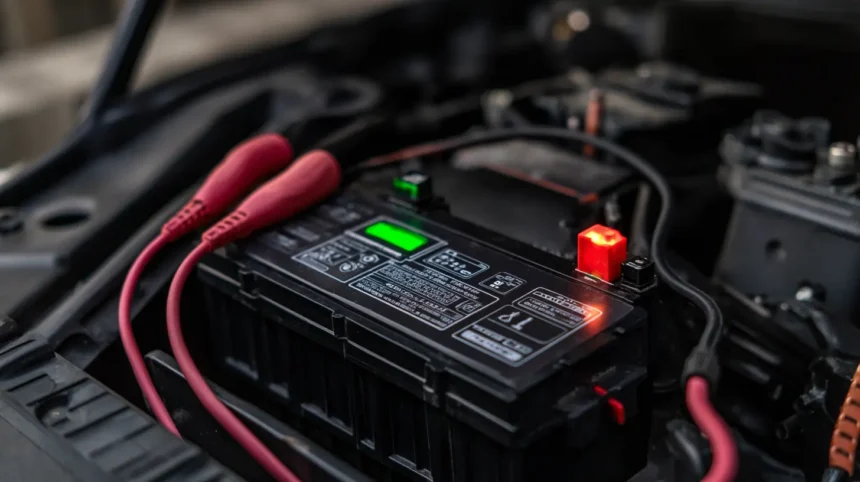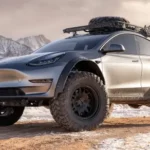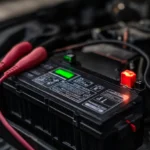A surprising number of breakdown calls come from healthy electric cars whose tiny 12-volt auxiliary battery has gone flat. When that happens the high-voltage pack stays isolated, the contactors never click, and the “dead” EV won’t even shift to Neutral. The good news: reviving the 12-volt system is almost identical to jump-starting a gasoline car—if you follow a handful of EV-specific rules.
1. Gather the right kit before you need it
Carry a quality lithium jump-starter (400–1 000 A) or a fresh set of insulated jumper cables rated for 12 V systems. Low-amp packs work fine; the EV’s DC-DC converter, not the starter motor, does the heavy lifting. Thick work gloves and safety glasses complete a basic roadside kit.
2. Park safely and power everything down
Whether you’re using a donor car or a jump pack, park on level ground, engage the parking brake, and switch off lights, HVAC, and infotainment in both vehicles. Many EVs hide the 12-V posts under a frunk panel—consult the owner’s manual for the exact location.
3. Identify the EV’s jump studs—not the orange cables
You are touching only the low-voltage circuit. Look for clearly marked red (+) and black (-) or chassis-ground studs. Never clamp to orange high-voltage lines; those belong to the traction battery and are completely off-limits.
4. Follow the correct cable sequence
- Red clamp to the EV’s positive (+) stud.
- Red clamp to the donor battery’s positive (+).
- Black clamp to the donor battery’s negative (-).
- Black clamp to a solid, unpainted metal ground on the EV—ideally a factory-designated bolt or strut tower, not the 12-V negative post. This sequence minimises sparks around either battery.pod-point.com
Portable jump-packs substitute for steps 2 and 3: connect red → red, black → ground.
5. Give the 12-V battery a gentle wake-up
Wait 30–60 seconds to let voltage stabilise, then press the EV’s Power or Start button. If the dash lights up, the DC-DC converter should begin recharging the 12-V battery from the main pack. Leave the cables connected for another minute to avoid an immediate dip.
6. Disconnect in reverse order
Remove the ground clamp first, then the donor negative, donor positive and, finally, the EV positive. Close any service panels and stow your gear.
7. Keep the car in Ready mode for at least ten minutes
Let the DC-DC converter top up the 12-V battery completely. Driving around is fine, but don’t shut the car off too soon or you may find yourself repeating the procedure.
8. Know what not to do
9. Prevent the next flat battery
If your EV sits for weeks, plug in periodically or attach a 12-V trickle charger approved for EV use—many models connect via the jump studs without removing the battery. Also check cabin lights, dashcams, or aftermarket alarms that may keep the low-voltage system awake.
Final thought
A lifeless 12-volt battery can immobilise any electric vehicle, but with a $70 jump-pack and the right clamp order you’ll be back on the road in minutes. Treat the low-voltage side with the same respect you give the high-voltage pack, and your EV will reward you with worry-free starts for years to come.









